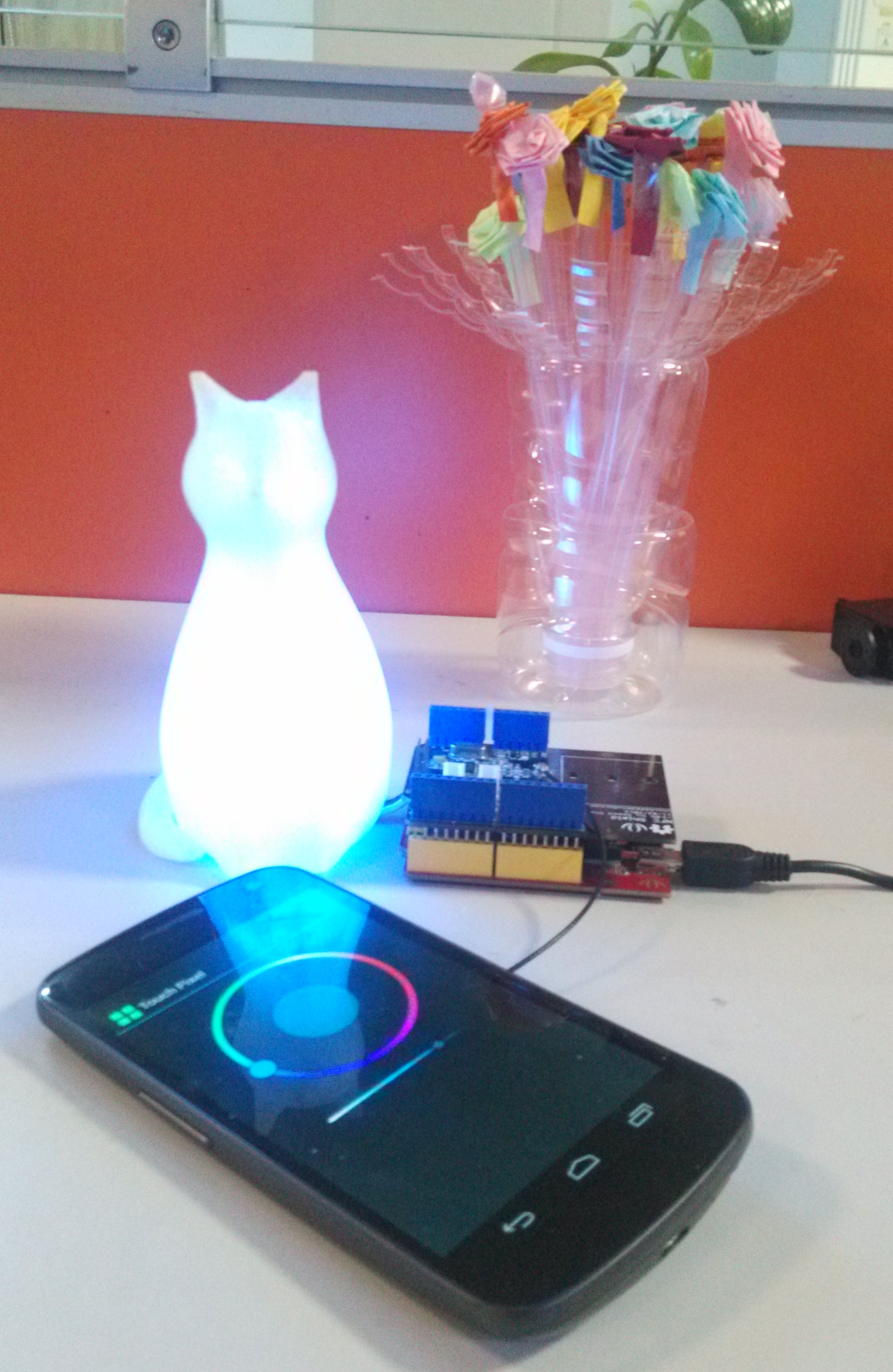to colorize a colorful pixel with a simple touch using nfc technology
Dependencies: Chainable_RGB_LED mbed
use Arch, NFC Shield and Grove - Chainable RGB LED to DIY a touch pixel. Then use an Android with NFC support to colorize it.
The project is on https://github.com/Seeed-Studio/TouchPixel
nfc/snep.cpp
- Committer:
- yihui
- Date:
- 2013-12-27
- Revision:
- 0:88960f3eeb2c
File content as of revision 0:88960f3eeb2c:
#include "snep.h"
#include "PN532_debug.h"
int8_t SNEP::write(const uint8_t *buf, uint8_t len, uint16_t timeout)
{
if (0 >= llcp.activate(timeout)) {
DMSG("failed to activate PN532 as a target\n");
return -1;
}
if (0 >= llcp.connect(timeout)) {
DMSG("failed to set up a connection\n");
return -2;
}
// response a success SNEP message
headerBuf[0] = SNEP_DEFAULT_VERSION;
headerBuf[1] = SNEP_REQUEST_PUT;
headerBuf[2] = 0;
headerBuf[3] = 0;
headerBuf[4] = 0;
headerBuf[5] = len;
if (0 >= llcp.write(headerBuf, 6, buf, len)) {
return -3;
}
uint8_t rbuf[16];
if (6 > llcp.read(rbuf, sizeof(rbuf))) {
return -4;
}
// check SNEP version
if (SNEP_DEFAULT_VERSION != rbuf[0]) {
DMSG("The received SNEP message's major version is different\n");
// To-do: send Unsupported Version response
return -4;
}
// expect a put request
if (SNEP_RESPONSE_SUCCESS != rbuf[1]) {
DMSG("Expect a success response\n");
return -4;
}
llcp.disconnect(timeout);
return 1;
}
int16_t SNEP::read(uint8_t *buf, uint8_t len, uint16_t timeout)
{
if (0 >= llcp.activate(timeout)) {
DMSG("failed to activate PN532 as a target\n");
return -1;
}
if (0 >= llcp.waitForConnection(timeout)) {
DMSG("failed to set up a connection\n");
return -2;
}
uint16_t status = llcp.read(buf, len);
if (6 > status) {
return -3;
}
// check SNEP version
if (SNEP_DEFAULT_VERSION != buf[0]) {
DMSG("The received SNEP message's major version is different\n");
// To-do: send Unsupported Version response
return -4;
}
// expect a put request
if (SNEP_REQUEST_PUT != buf[1]) {
DMSG("Expect a put request\n");
return -4;
}
// check message's length
uint32_t length = (buf[2] << 24) + (buf[3] << 16) + (buf[4] << 8) + buf[5];
// length should not be more than 244 (header + body < 255, header = 6 + 3 + 2)
if (length > (status - 6)) {
DMSG("The SNEP message is too large: ");
DMSG_INT(length);
DMSG_INT(status - 6);
DMSG("\n");
return -4;
}
for (uint8_t i = 0; i < length; i++) {
buf[i] = buf[i + 6];
}
// response a success SNEP message
headerBuf[0] = SNEP_DEFAULT_VERSION;
headerBuf[1] = SNEP_RESPONSE_SUCCESS;
headerBuf[2] = 0;
headerBuf[3] = 0;
headerBuf[4] = 0;
headerBuf[5] = 0;
llcp.write(headerBuf, 6);
return length;
}
 Yihui Xiong
Yihui Xiong
